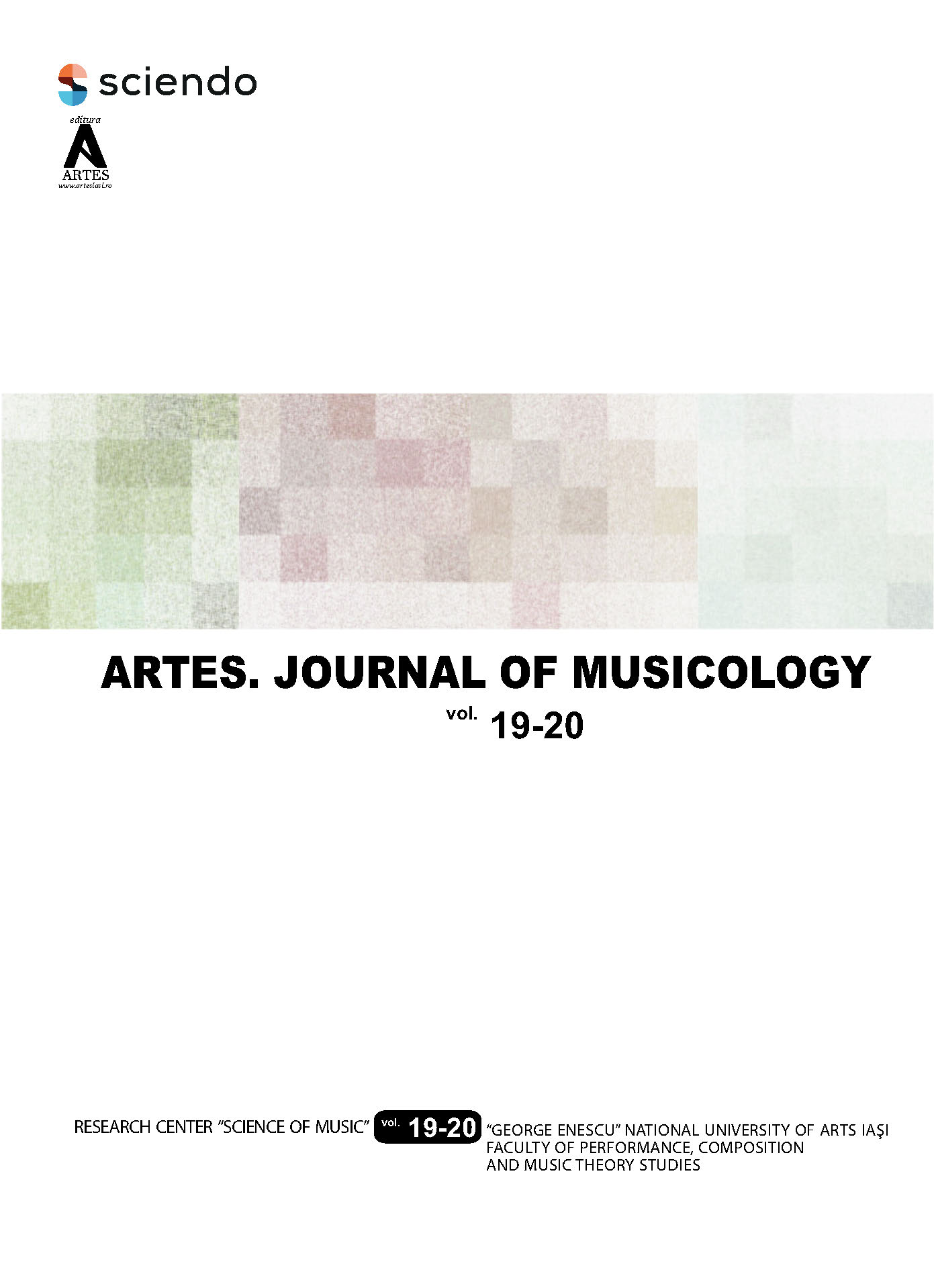Jazz Influences in Chamber Musical Works created by Composers from Iaşi at the Beginning of the 21st Century
Jazz Influences in Chamber Musical Works created by Composers from Iaşi at the Beginning of the 21st Century
Author(s): Aurelia SimionSubject(s): Music
Published by: Editura ARTES
Keywords: chamber music; jazz influences; Iași composers; stylistic-interpretative aspects;
Summary/Abstract: Chamber Music has always been a genre predefined to a certain audience. At the merge of the 20th and 21st Centuries, the interest for this genre has grown exponentially, from Romanian and Bessarabia composers alike. Because the concept of Chamber Music has evolved during the ages and has always offered the possibility for experimentation, it has managed to infiltrate into present day Ensembles, by associating timbre and constructive heterogenic instruments. The search for new ways of expressing oneself, new sounds and new stylistic methods and the desire to use new types of sound emission represent a continuous motivation for the composers, whose contribution to the Chamber Ensembles is frequently enrichened. Thus, the Jazz influence has a significant role inside the works of Sabin Pautza, Romeo Cozma (Romania) and Oleg Negruța (Republic of Moldova). The article is focused on Chamber Music compositions with Jazz influences, written by Iași authors. The purpose is to create a general presentation and also a structural-interpretive analysis of some works from my personal repertoire, which was actually one of the main criteria of selection. The objects of the research are: highlighting the particularities of the genre and style of contemporary works; presenting the interpretive aspects of the compositions and proposing some personal suggestions and tips. Although the selected works have been initially composed for different instruments and have been played to live audience, they have not presented themselves, so far, as a research subject, and thus have not been analyzed. Taking into consideration this deduction, the novelty and the personal contribution are visible in the scientific research that deals with the autochthonous compositional patrimony. The aspects presented in this article can be used for pedagogical processes and, at the same time, they can behave as a practical method in managing the chosen repertoire.
Journal: Artes. Journal of musicology
- Issue Year: 2019
- Issue No: 20
- Page Range: 242-255
- Page Count: 14
- Language: English

